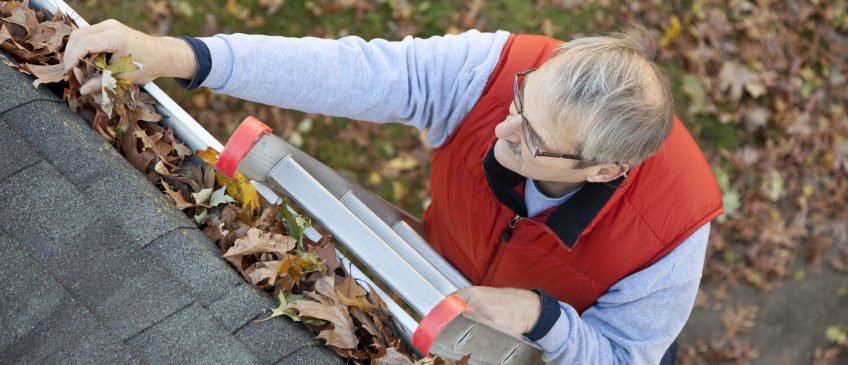It seems like a common task – getting on a ladder for gutter cleaning, hang Christmas lights, or repair the roof. But did you know that millions of people receive emergency treatment from ladder-related injuries each year? And, it contributes to thousands of deaths, too.
Not only DIY-ers can use tips for climbing a ladder. Professional contractors can get too comfortable and need to be reminded of ladder safety hazards as well. LeafFilter Gutter Protection shares these common ladder mistakes so that you can avoid them the next time you have to climb up a ladder to complete a common household chore:
1. Selecting the Wrong Type of Ladder
Two things you’ll need to look out for when choosing a ladder: how much weight the ladder can hold, and how tall the ladder is for the necessary job.
Unfortunately, if the climber exceeds the maximum weight limit that the ladder can hold, the ladder could break and cause the user to fall or become injured. It is necessary to make sure the ladder is sturdy enough for the climber to avoid any mishaps.
Another common occurrence is when the ladder is too short for a specific task, causing the climber to extend their reach or stand on the top rung to gain. It’s not worth risking your health to try to reach a different working area.
2. Not Making Sure it’s Locked
If the spreaders on the ladder are not locked in the horizontal position, the ladder could collapse when the climber uses their full weight. It’s important to make sure these spreaders are completely locked out and straight before making the climb.
3. Prep on an Even Surface
It may seem like common sense to not position a ladder on rocks or an irregular surface, but most homeowners do not realize that soil, concrete, and mulch may not be sturdy or completely flat. These types of surfaces can cause your ladder to shift, and your ladder may fall over with you on it!
4. Using an Old, Damaged Ladder
After a couple years of use and abuse, your trusty ladder may become faulty. Damaged ladders are extremely dangerous and can break in the middle of use, causing serious injury to the climber.
5. Finding the Right Angle
When using an extension ladder, instead of a freestanding step ladder, you have to make sure that it is positioned against the house at the right angle. If it isn’t, the person can actual tilt backward once he or she climbs up near the top. To prevent this, make sure that the ladder is set one foot away from the base of the home for every four feet in the air that the person will climb.
6. Rule of Thumb: Three Points of Contact
If the climber fails to maintain three points of contact on the ladder, referring to hands and feet, they are at risk for falling off the ladder. Human error is definitely the cause of ladder accidents. If you attempt to reach for something that is too far away, or don’t have a sturdy grip with at least one hand, you are at risk for falling off your ladder and injuring yourself.
Pro Tip: Use a tool belt or towlines to convey any materials you may need so that your hands are free when climbing.
7. Use a spotter
It is vital that you use a spotter – a neighbor, friend, or spouse – when on the ladder to ensure that there are no mishaps. Have a helper support the base when the ladder is in use.
8. One at a Time
You should never have another person on a ladder, unless that ladder is specifically designed for more than one climber (like a Trestle Ladder). This can make extension ladders extremely dangerous and unbalanced.
Don’t be at risk for falling off your ladder while attempting to clean your gutters! Stay grounded with LeafFilter Gutter Protection and never clean your gutters again. LeafFilter will clean and realign your downspouts and gutters before installing a high quality gutter guard product that ensures you’ll never experience any clogs again. Learn more about LeafFilter Gutter Protection.

